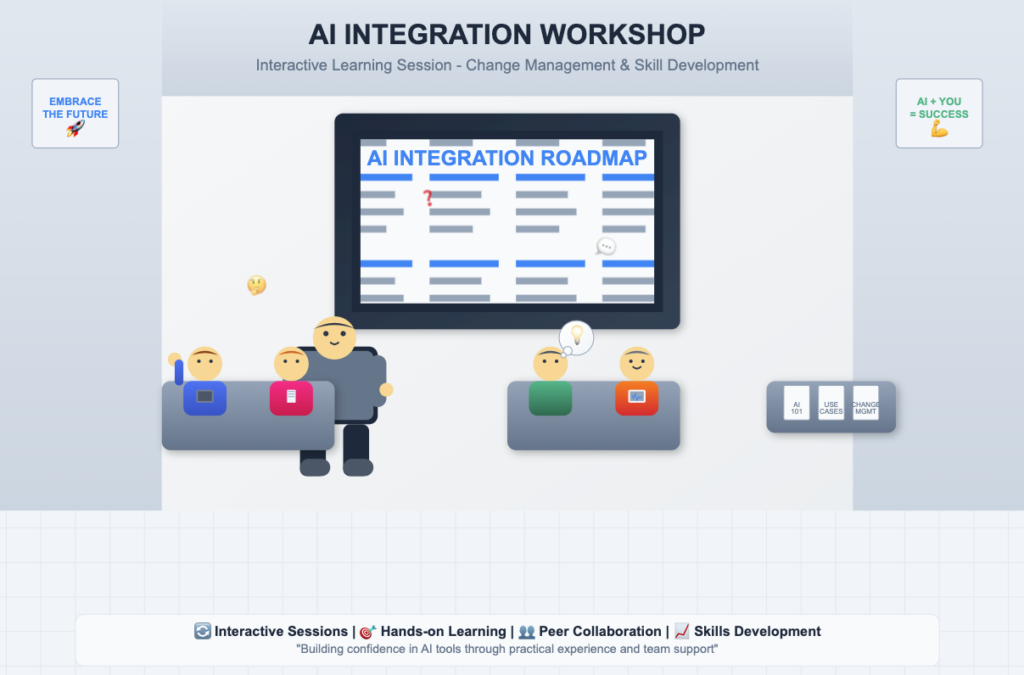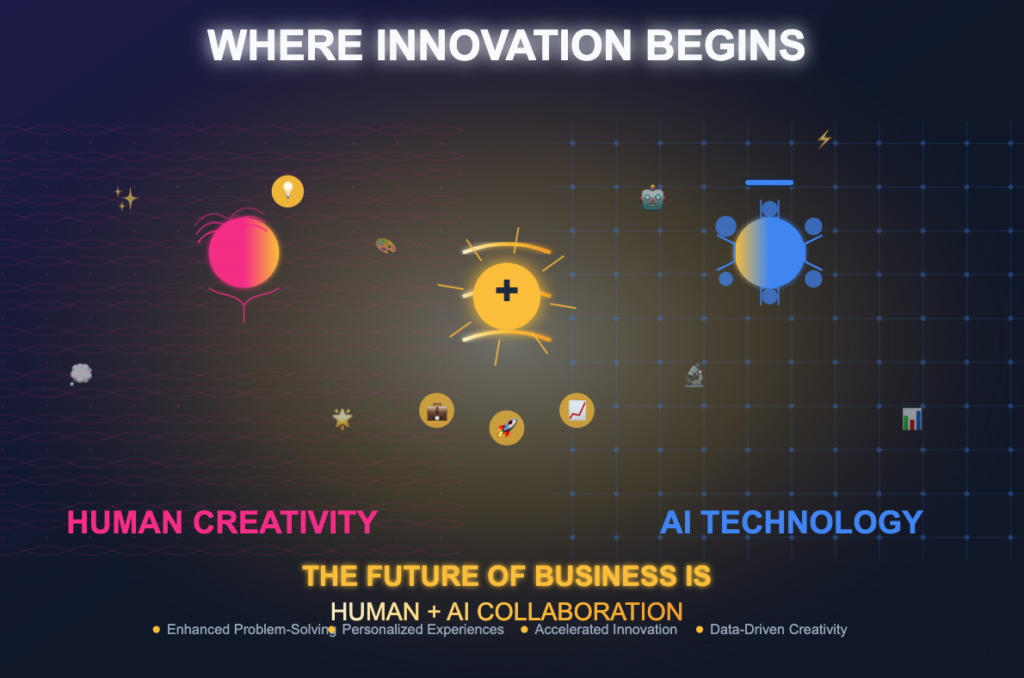Imagine a workforce that never sleeps, learns on the go, and seamlessly handles complex tasks across your organization—this is the promise of AI agents for business tasks. These intelligent systems are no longer confined to repetitive operations; they are transforming traditional business structures by taking on roles once reserved for large teams, enabling companies to operate leaner, smarter, and faster.
For enterprise leaders, the potential is groundbreaking. From creating interconnected workflows across departments to optimizing resource allocation, AI agents introduce efficiency and precision that redefine how organizations grow and stay competitive. The challenge, however, lies in implementing these tools effectively—balancing innovation with security, employee buy-in, and measurable ROI.
This guide explores the transformative potential of AI agents, offering actionable strategies for deployment, insights into their cross-functional capabilities, and the long-term impact on organizational success. Let’s uncover how this technology can reshape your business operations and position you as a leader in digital transformation.
Key Takeaways
- Organizational Transformation: AI agents are reshaping traditional business structures by handling complex disciplines that previously required large teams, fundamentally changing how organizations operate and allocate resources.
- Cross-functional Integration: Modern AI agents can seamlessly work across multiple business functions, from operations to customer service, creating interconnected automated workflows that enhance overall efficiency.
- Implementation Strategy: Successful AI agent deployment requires a phased approach, starting with clear use-case identification, followed by pilot programs, and scaling based on measured success metrics.
- ROI Considerations: While initial investment in AI agents may be substantial, organizations typically see returns through reduced operational costs, improved accuracy, and enhanced productivity within 12-18 months.
- Change Management: Effective implementation requires comprehensive change management strategies to address employee concerns, provide training, and ensure smooth transition to AI-enhanced workflows.
- Security and Compliance: Enterprise-grade AI agents must incorporate robust security measures and comply with industry-specific regulations while handling sensitive business data.
- Scalability Features: Modern AI agents are designed to scale alongside business growth, adapting to increasing complexity and evolving business needs without significant additional investment.
- Performance Metrics: Successful AI agent implementation requires establishing clear KPIs and monitoring systems to measure impact on business operations and ROI.
AI agents for business tasks are transforming how enterprises operate, creating unprecedented opportunities for efficiency and innovation. These intelligent software solutions automate complex processes while adapting to changing business needs. For digital transformation leaders seeking competitive advantage, understanding how these technologies can reshape operations is essential to staying ahead in today’s rapidly evolving business landscape.
Understanding AI Agents and Their Role in Business Tasks

AI agents for business tasks are specialized software systems designed to perform specific business functions with minimal human intervention. Unlike traditional automation tools that follow rigid rules, these agents leverage machine learning, natural language processing, and other AI technologies to make decisions, learn from interactions, and improve over time.
These agents fall into several categories:
- Task-specific agents – Focused on automating particular business processes like invoice processing or customer support
- Conversational agents – Handle natural language interactions with customers and employees
- Analytical agents – Process data to extract insights and support decision-making
- Orchestration agents – Coordinate multiple systems and workflows across the organization
The capabilities of AI agents extend far beyond simple automation. They can analyze complex data sets, recognize patterns, make predictions, and even generate creative content. This allows them to handle tasks that previously required human judgment and expertise.
For enterprise organizations, AI automation for businesses represents a fundamental shift in how work gets done. Rather than merely executing predefined steps, these agents can adapt to changing circumstances, learn from experience, and continuously improve their performance.
The transformative potential lies in their ability to scale operations without proportional increases in headcount, reduce errors in critical processes, and free human workers to focus on higher-value activities that require creativity, empathy, and strategic thinking.
Organizational Transformation with AI Agents
Business process AI agents are catalyzing profound structural changes within organizations. Traditional hierarchical models are giving way to flatter, more agile structures where AI handles routine operations while human talent focuses on innovation and relationship-building.
This transformation affects resource allocation in several ways:
- Shifting budget from operational overhead to strategic initiatives
- Reallocating human capital from repetitive tasks to creative and interpersonal roles
- Reducing physical infrastructure needs as digital processes replace manual ones
- Enabling 24/7 operations without corresponding increases in staffing costs
Global financial services firm JP Morgan Chase demonstrates this transformation in action. Their COIN (Contract Intelligence) platform uses AI to review commercial loan agreements, completing in seconds what previously took 360,000 hours of lawyer time annually. This allowed them to redeploy legal talent to more complex advisory work while improving accuracy and compliance.
Similarly, Unilever transformed its hiring process with an AI agent system that screens candidates, conducts initial interviews, and assesses fit. This reduced hiring time from 4 months to 4 weeks while increasing diversity in their candidate pool by 16%.
The most successful transformations share common elements: clear strategic alignment, thoughtful change management, and a focus on augmenting rather than replacing human capabilities. Organizations that view AI agents as partners rather than substitutes for human workers typically achieve better outcomes and face less resistance to implementation.
Cross-functional Integration of AI Agents
Enterprise AI solutions deliver maximum value when they connect workflows across traditionally siloed business functions. This integration creates a seamless flow of information and actions throughout the organization, eliminating bottlenecks and accelerating processes.
In customer service operations, AI agents can handle initial customer inquiries, automatically route complex issues to appropriate specialists, update CRM systems, and trigger follow-up actions in other departments. This ensures consistent customer experiences while reducing response times and workload.
Cross-Departmental AI Integration Examples
- Sales and Marketing: AI agents qualify leads, schedule follow-ups, and provide sales teams with contextual customer data
- Finance and Operations: Automated invoice processing connects with inventory management and cash flow forecasting
- HR and IT: Employee onboarding agents coordinate equipment provisioning, access rights, and training schedules
Pharmaceutical company AstraZeneca implemented cross-functional AI agents to streamline its research and development process. Their system analyzes scientific literature, clinical trial data, and internal research to identify promising drug candidates. It then coordinates with regulatory compliance systems to ensure proper documentation and testing protocols. This integration reduced development timelines by 30% while improving compliance accuracy.
The key to successful cross-functional integration lies in establishing standardized data formats, clear handoff protocols between systems, and governance frameworks that maintain data integrity across the organization. When properly implemented, these integrated AI agents create a digital nervous system that connects every part of the business.
Strategic Implementation of AI Agents
Successful deployment of AI agents for business tasks requires a methodical approach that balances ambition with pragmatism. A phased implementation strategy allows organizations to build momentum while managing risk and capturing early wins.
Phase 1: Discovery and Planning
Begin by identifying high-impact use cases through process analysis and stakeholder interviews. Prioritize opportunities based on potential ROI, implementation complexity, and strategic alignment. The ideal initial candidates are processes that are:
- High-volume and repetitive
- Rule-based but time-consuming
- Currently causing bottlenecks or customer dissatisfaction
- Well-documented with clear success metrics
Phase 2: Pilot Programs
Start with limited-scope pilot implementations that demonstrate value while containing risk. These controlled experiments allow teams to refine the technology, develop internal expertise, and build confidence before wider deployment.
Manufacturing giant Siemens followed this approach when implementing AI agents in their supply chain. They began with a focused pilot in one facility that automated purchase order processing and supplier communications. After demonstrating a 62% reduction in processing time and 28% cost savings, they expanded the solution across their global operations.
Phase 3: Scaling and Integration
As pilot programs prove successful, expand deployment while integrating with existing systems and processes. This phase requires careful attention to change management, training, and technical infrastructure to ensure smooth adoption.
The most effective implementations incorporate feedback loops that continuously measure performance against established KPIs, allowing for ongoing optimization and expansion of AI capabilities as the organization’s needs evolve.
Evaluating ROI and Performance Metrics
Measuring the impact of AI automation for businesses requires a comprehensive framework that captures both immediate efficiency gains and longer-term strategic benefits. The initial investment typically includes software licensing, implementation services, infrastructure upgrades, and staff training.
Against these costs, organizations should track multiple categories of returns:
Direct Cost Savings
- Reduced labor costs for automated tasks
- Lower error rates and associated remediation expenses
- Decreased overtime and temporary staffing needs
- Reduced physical infrastructure requirements
Productivity Enhancements
- Increased throughput of key business processes
- Faster cycle times for customer-facing activities
- Improved resource utilization rates
- Enhanced employee productivity on high-value tasks
Strategic Value Creation
- Improved customer satisfaction and retention
- Enhanced ability to scale operations
- New revenue opportunities from improved capabilities
- Competitive differentiation through superior service
Insurance provider Anthem established a comprehensive metrics framework for its AI agent implementation. They tracked not only cost savings (42% reduction in claims processing expenses) but also customer impact metrics like first-contact resolution rate (improved by 27%) and overall satisfaction scores (increased by 18 points).
For maximum accuracy, organizations should establish baseline measurements before implementation and use control groups where possible to isolate the impact of AI agents from other business changes. Regular reassessment of metrics ensures the solution continues delivering value as business conditions evolve.
Change Management and Employee Engagement

The introduction of business process AI agents represents a significant change for employees whose work will be affected. Addressing concerns proactively through comprehensive change management is critical for successful adoption and minimizing resistance.
Employee apprehension typically centers around job security, changing role requirements, and loss of control. A transparent communication strategy should acknowledge these concerns while highlighting how AI will enhance rather than replace human work.
Effective Change Management Strategies
- Early involvement: Engage employees in the process mapping and requirements gathering phases
- Clear communication: Provide regular updates on implementation progress and expected impacts
- Skills development: Offer training programs that prepare employees for evolving roles
- Success recognition: Celebrate early wins and highlight employee contributions
Technology company IBM implemented a “Digital Companion” approach when deploying AI agents across their customer service operations. They positioned the technology as a tool that would handle routine inquiries while allowing representatives to focus on complex problem-solving. They involved service agents in training the AI and recognized those who contributed most effectively. The result was 90% employee adoption within three months and a 35% increase in job satisfaction scores.
Training programs should address both technical skills for working with AI systems and soft skills for the more consultative roles that often emerge after automation. AI-powered process automation platforms work best when employees understand how to collaborate effectively with these digital colleagues.
Ensuring Security and Compliance
As AI agents for business tasks handle sensitive information and make consequential decisions, robust security measures and compliance frameworks are essential. Organizations must protect against both external threats and internal misuse while meeting regulatory requirements.
Security Considerations
Comprehensive security for AI agents encompasses multiple layers:
- Data protection: Encryption for data at rest and in transit
- Access controls: Role-based permissions and multi-factor authentication
- Monitoring systems: Continuous surveillance for unusual patterns or potential breaches
- Secure development: Code reviews and vulnerability testing during development
Healthcare provider Cleveland Clinic implemented a security-first approach for their patient scheduling AI agents. They established a dedicated security operations center that monitors AI activities in real-time, implemented end-to-end encryption for all patient data, and conducts quarterly penetration testing to identify potential vulnerabilities.
Compliance Requirements
AI agents must adhere to industry-specific regulations and broader data protection laws:
- GDPR and CCPA for personal data processing
- HIPAA for healthcare information
- SOX for financial reporting
- Industry-specific requirements like FDA regulations or banking standards
Compliance should be built into AI systems from the beginning through features like comprehensive audit trails, data minimization principles, and automated compliance checks. Regular compliance reviews and updates ensure systems remain current as regulations evolve.
Organizations should also establish clear governance frameworks that define accountability for AI decisions, processes for handling exceptions, and procedures for addressing potential bias or ethical concerns in AI operations.
Scalability Features and Future-proofing AI Solutions
For maximum long-term value, enterprise AI solutions must scale effectively as business needs grow and evolve. Scalable AI agent architectures accommodate increasing transaction volumes, expanding use cases, and growing complexity without proportional increases in cost or management overhead.
Key Scalability Features
- Modular design: Component-based architecture that allows selective upgrades
- Cloud-native implementation: Elastic resources that expand and contract with demand
- API-first approach: Well-documented interfaces for integration with new systems
- Containerization: Portable deployment units that simplify management
E-commerce giant Shopify built their AI agent platform with scalability as a core principle. Their modular design allows merchants to activate only the capabilities they need, while the cloud infrastructure automatically scales during peak shopping periods. This approach enabled them to handle a 76% increase in transaction volume during Black Friday without performance degradation.
Future-proofing Strategies
To ensure AI investments remain valuable as technology and business needs evolve:
- Select solutions with active development roadmaps and strong vendor support
- Implement continuous learning capabilities that improve performance over time
- Maintain clean, well-structured data that can feed future AI applications
- Establish governance frameworks that can adapt to new use cases
Organizations should also consider how their AI agents will integrate with emerging technologies like blockchain, the Internet of Things, and augmented reality. Automating workflows with AI creates a foundation that can incorporate these technologies as they mature, extending the lifespan and value of initial investments.
Leveraging AI-powered Productivity and New Business Models
AI-powered productivity extends beyond simple efficiency gains to enable entirely new ways of creating and delivering value. Organizations that fully embrace AI agents can reimagine their business models, entering new markets and serving customers in previously impossible ways.
Productivity Transformation
AI agents dramatically enhance productivity through:
- Parallel processing of multiple tasks simultaneously
- 24/7 operation without fatigue or performance degradation
- Consistent quality regardless of volume fluctuations
- Rapid scaling to meet demand spikes without hiring delays
Financial services firm Morgan Stanley deployed AI agents to assist their financial advisors. These agents analyze client portfolios, market conditions, and research reports to generate personalized investment recommendations. This increased advisor productivity by 35% while improving the quality and personalization of client advice.
Emerging Business Models
AI agents enable innovative business approaches such as:
- Hyper-personalization at scale: Tailored products and services for each customer without corresponding cost increases
- Outcome-based pricing: Charging based on results rather than inputs or time
- Continuous service models: Shifting from episodic interactions to ongoing relationships
- Platform ecosystems: Creating multi-sided marketplaces powered by AI orchestration
Insurance provider Lemonade revolutionized its industry with an AI-first business model. Their AI agents handle everything from policy creation to claims processing, enabling them to offer lower premiums while maintaining profitability. Their claims AI can process and pay simple claims in seconds rather than days, creating a competitive advantage that traditional insurers struggle to match.
For established organizations, unleashing AI agents often begins with enhancing existing operations before gradually evolving toward more transformative business models as capabilities and confidence grow.
Choosing the Right AI Agents for Specific Business Needs
Selecting the appropriate AI agents for business tasks requires aligning technology capabilities with organizational objectives, technical environment, and operational requirements. A systematic evaluation process helps identify solutions that deliver maximum value while minimizing implementation challenges.
Assessment Criteria
Evaluate potential AI agent solutions across multiple dimensions:
- Functional fit: Alignment with specific process requirements and use cases
- Technical compatibility: Integration capabilities with existing systems and data sources
- Scalability: Ability to grow with increasing transaction volumes and use cases
- Total cost of ownership: Implementation, licensing, maintenance, and operational costs
- Vendor stability: Financial health, market position, and support capabilities
Industry-Specific Considerations
Different sectors have unique requirements that influence AI agent selection:
- Financial Services: Prioritize compliance features, audit trails, and fraud detection capabilities
- Healthcare: Focus on HIPAA compliance, integration with electronic health records, and clinical decision support
- Manufacturing: Emphasize real-time processing, IoT integration, and supply chain visibility
- Retail: Prioritize customer experience features, inventory management, and omnichannel capabilities
Global retailer Walmart employed a rigorous selection process when implementing AI agents for inventory management. They evaluated solutions based on accuracy rates, processing speed, integration with existing warehouse systems, and ability to handle their massive product catalog. The selected solution reduced out-of-stock incidents by 30% while decreasing inventory carrying costs by 17%.
Organizations should consider both current needs and future requirements when selecting AI agents. AI automation platforms with modular architectures often provide the flexibility to add capabilities over time as business needs evolve and AI technologies mature.
Conclusion: Redefining Business Operations with AI Agents

AI agents for business tasks represent a fundamental shift in how organizations operate, moving from human-centered processes with technological support to AI-driven operations with human oversight and strategic direction. This transformation delivers benefits across multiple dimensions: operational efficiency, cost structure, service quality, and business agility.
The most successful implementations share common characteristics: clear strategic alignment, thoughtful change management, robust security and compliance frameworks, and scalable architectures that evolve with business needs. Organizations that approach AI agents as strategic assets rather than tactical tools achieve the greatest long-term value.
For digital transformation leaders, the opportunity extends beyond incremental improvements to existing operations. AI agents enable entirely new business models, customer experiences, and competitive advantages that were previously impossible. By reimagining what’s possible when intelligent automation handles routine operations, organizations can redirect human talent toward innovation, relationship building, and strategic initiatives.
The journey toward AI-powered operations is not without challenges, but organizations that develop clear implementation roadmaps, establish appropriate governance structures, and focus on augmenting rather than replacing human capabilities will position themselves for sustainable success in an increasingly digital business landscape.
References
Frequently Asked Questions
AI agents are the conduits of intelligent automation, transforming businesses with their varied capabilities. Let’s explore the five primary types that power modern business operations:
- Simple Reflex Agents: These agents react directly to environmental changes without maintaining internal states.
- Model-Based Reflex Agents: They use knowledge about the environment to make decisions.
- Goal-Based Agents: Designed to achieve specific goals by choosing appropriate actions.
- Utility-Based Agents: They choose actions based on a utility function that measures the desirability of outcomes.
- Learning Agents: Capable of improving their performance over time by learning from their interactions.
For example, financial institutions use model-based and learning agents for fraud detection, adapting to new fraud patterns as they emerge.
AI agents are the blueprints for operational excellence, allowing businesses to automate repetitive tasks and enhance decision-making. Here’s how companies can leverage them:
- Customer Service: Customer agents, equipped with NLP, provide round-the-clock support, improving customer satisfaction.
- Operational Efficiency: Employee agents automate routine tasks, freeing staff for strategic roles.
- Data Analysis: AI agents can process large datasets to identify trends and insights, driving business growth.
- Process Optimization: They streamline workflows by integrating with robotic process automation (RPA) technologies.
For instance, Volkswagen utilizes a virtual assistant powered by AI to enhance the customer experience by addressing questions and providing instructions.
AI is the powerhouse behind modern business innovation, offering solutions that boost efficiency, productivity, and profitability. Here are some ways AI impacts business:
- Automation: AI automates tasks such as data entry, customer service, and back-office operations.
- Decision-Making: By analyzing vast datasets, AI provides actionable insights that inform business strategies.
- Customer Engagement: AI-driven chatbots enhance customer interaction and satisfaction.
- Compliance and Risk Management: AI helps in monitoring regulatory compliance and assessing risks more effectively.
According to various studies, businesses that adopt AI see significant improvements in operational efficiency and customer satisfaction.
AI agents are versatile tools that can perform a wide range of tasks, from basic automation to complex decision-making. Here are some examples:
- Conversational Support: AI agents can interact with customers and employees to provide assistance and resolve queries.
- Data Processing and Analysis: They can process large data sets to extract meaningful insights.
- Task Automation: AI agents automate repetitive tasks, freeing up resources for more strategic work.
- Strategy Optimization: By using real-time data, AI agents can optimize business strategies and enhance operational efficiency.
For instance, companies like Uber use AI agents to streamline onboarding processes, reducing manual labor and increasing efficiency.
Any Other Questions?
That wraps up the most popular questions we get, but fire away with any others!
Contact us to discuss your next development project!
FAQ References
digitalocean.com/resources/articles/types-of-ai-agents
multimodal.dev/post/13-types-of-ai-agents
cloud.google.com/discover/what-are-ai-agents
ibm.com/think/topics/ai-agent-types
datacamp.com/blog/types-of-ai-agents

